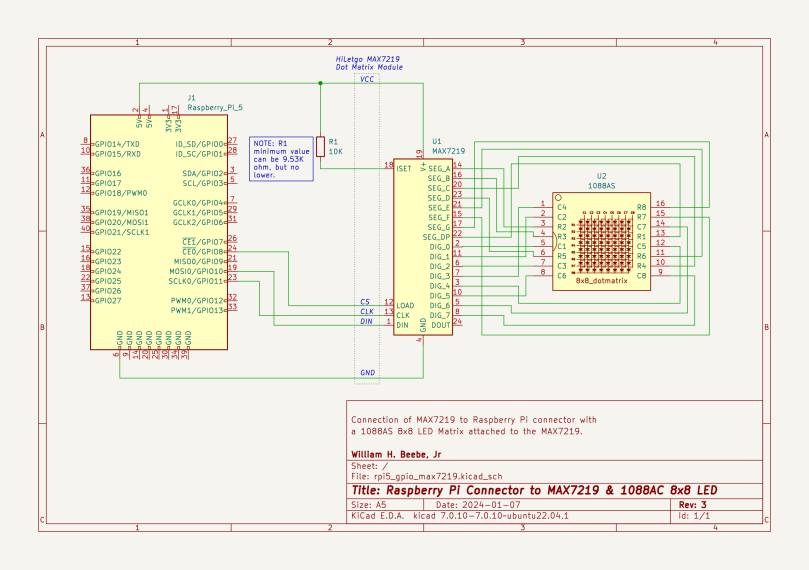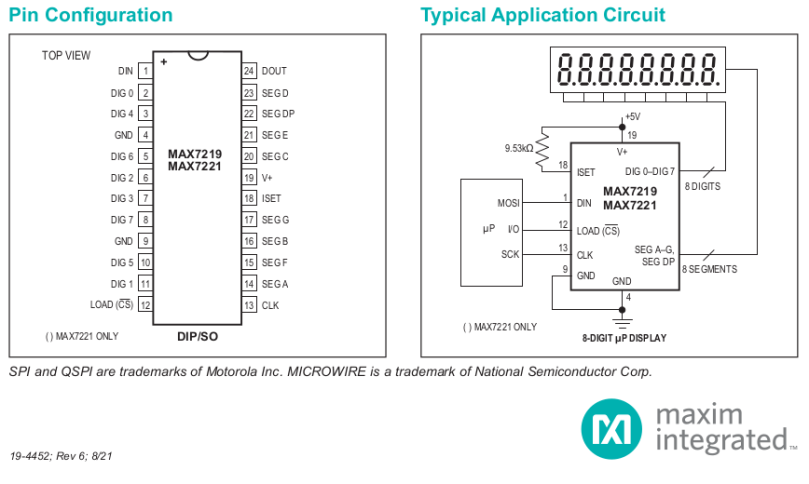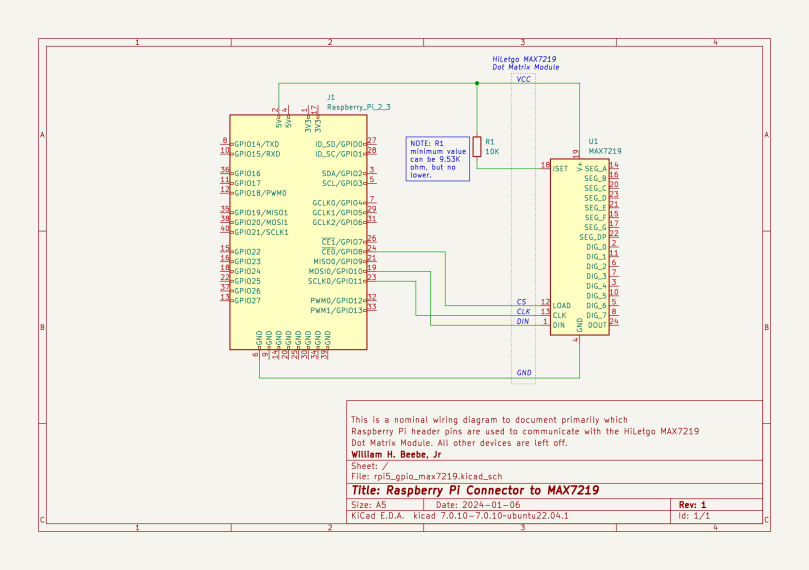
It bothered me quite a bit that my last few schematic diagrams were missing the 8×8 LED matrix display. As it turns out, the part number for the 8×8 LED display is printed on the side: 1088AC. When I went looking for any part sheets for it, all I found was a single page with this printed on it

It was a PDF with a copy of a copy of the circuit diagram. I could barely make out the column, row, and physical pin numbers. I then went looking for an open source KiCad part for the 1088AC and found one on GitHub, which I forked and then cloned from my fork. I was able to quickly ascertain that the part was designed for KiCad 6. From there I used KiCad’s part library manager to import the part and then convert to KiCad 7 format. I had to do a bit more work with it before I could use it. For example, all the LED symbols were reversed, pointing up (as common anode) instead of down (common cathode). A little work to select and flip each diode symbol took care of that. I also change all the row pins from input to output, as they were all defined as input.
I am aiming to order a dozen or so MAX7221 parts from e-bay. The MAX7221 has a few additions internally over the MAX7219, one of which is that it support QSPI format data communications. Same price as the MAX2719, same pinout.

What’s interesting about the MAX7219/MAX7221 part sheet, it mentioned on the front page that it was suitable for LED matrix displays, but all the circuit diagram examples only show seven-segment by eight character displays, such as the one on the right above.
More learned with KiCad 7; better control with the schematic diagram, the ability to import parts, and the ability to convert from KiCad 6 to KiCad 7. When I’m finished with the 1088AC KiCad drawing part I’ll update my GitHub version and post a link to it in another post.
Links
My copy with updates and migration to KiCad 7. Note that only the 1088AS part has been updated. — https://github.com/wbeebe/kicad-LED_DotMatrix





You must be logged in to post a comment.